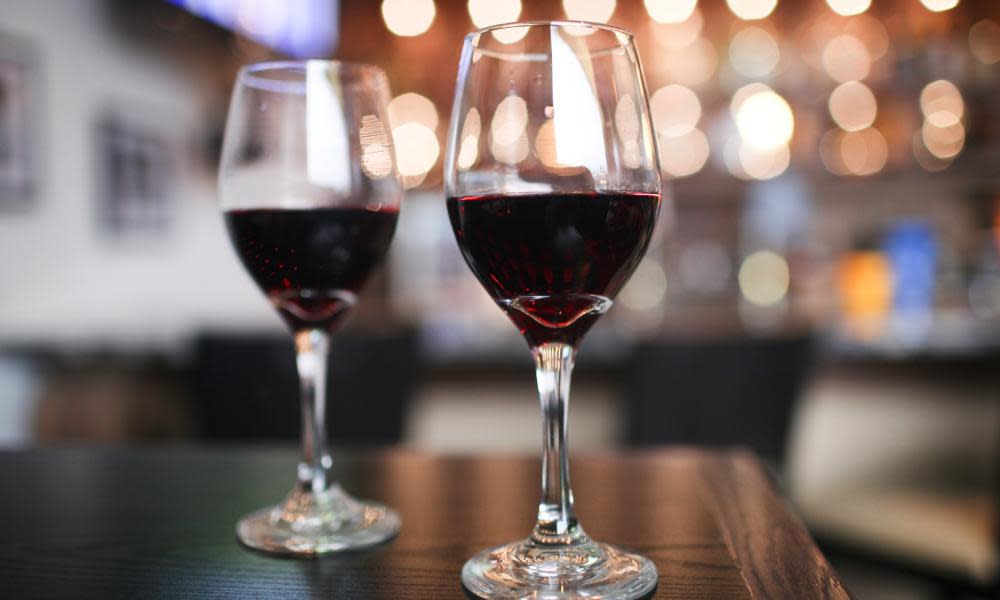Bigger wine glasses make us drink too much, says researcher

Wine glasses have increased in size from a capacity of 65ml 300 years ago to 450ml today and the change has encouraged us to drink far more than we should, according to a behavioural scientist speaking at the Hay festival.
Theresa Marteau, director of the behaviour and health research unit at Cambridge University, said her team had looked at 18th-century wine glasses at the Ashmolean museum in Oxford, 19th-century wine glasses owned by Buckingham Palace, and more recent glasses in John Lewis catalogues and the evidence was clear: they had got bigger.
“There has been a gradual increase in capacity from 65ml to 450ml,” she told Hay festival. “The key period was the 1990s.” Size matters because the bigger the glass the more we are inclined to consume, she said.
Her team carried out a six-week experiment in a Cambridge wine bar where 175ml of wine was sold in three different sized glasses at different times. Sales in the biggest glasses rose 14%, with no difference in the other two.
Plates and dishes are also getting bigger, which may be one of the reasons 65% of the UK population is overweight or obese.
Marteau described an experiment where two sets of people sat at a dinner table eating soup. One couple had a bottomless soup bowl that was gradually filled up from below while the others had a standard bowl. The first couple ate twice as much but felt as full as the ones who ate from the normal soup bowl.
Smaller plates and dishes would have an effect on public health, Marteau said. “If we made sizes smaller for all food tableware, for every occasion we encounter food the effects of size would be to reduce how much we consume by up to 16% in adults per day.”
Marteau’s team looks at why information about the risks of smoking, drinking, eating and not doing enough exercise does not seem to change our unhealthy behaviour.
Sometimes it was as simple as the message, she said. A warning that the ice is thin and you may die is more offputting than a message that the sofa you are sitting on could be a killer.
Our environment also has a strong influence on behaviour, whether that is how safe streets are to go for walks on, or how big the products are with a slice of white bread increasing in size by 11% in 20 years in the UK.
Marteau said she was not at Hay plugging a book; all of the research carried out by her team is available free online. But she is keen to do more research into British drinking habits. “I should say anyone who has control of large bars such as Wetherspoons, we would love to collaborate with you.”

 Yahoo News
Yahoo News 
